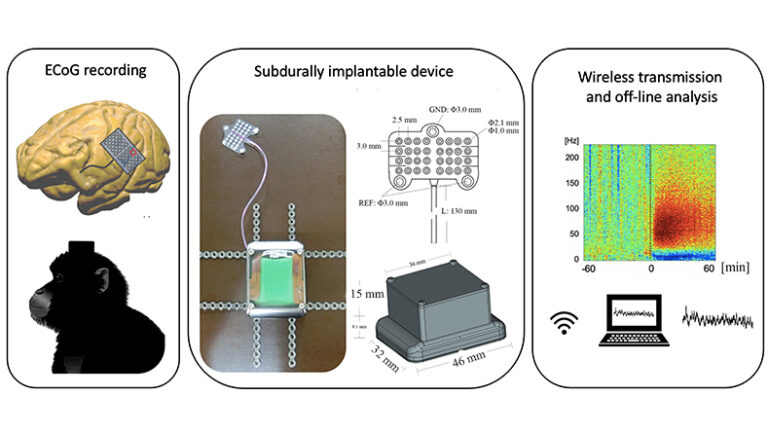Wireless implantable brain machine interfaces(BMIs) are a promising tool to restore communication and motor functions for individuals with severe motor disability. Prior to clinical application, recording performance must be sufficiently confirmed by animal experiments. In addition, one limitation of current devices is their reliance on cables connecting the implanted electrodes and computers to ensure stability and fidelity of data transmission. tethered connections restrict the subject’s natural mobility. In this study, we aimed to evaluate the performance of a novel implantable wireless device for recording brain activity in two nonhuman primates.
We developed and customized a wireless device for implantable BMIs for clinical application. We used a battery instead of a wireless power charging system. This device was designed to be mounted on the skull. Measurement and data transmit units were assembled in the transcutaneous titanium casing. A silicone-based thirty-two electrodes array was subdurally implanted over the left temporoparietal cortex. Two weeks after surgery, we evaluated the recording performance of the wireless device by 40-Hz auditory steady-state responses (ASSRs) and ketamine-induced oscillation changes.
We presented a customized wireless implantable BMI device with 32 subdural electrodes that enables broadband ECoG signal recording and stable data transmission for several hours durations in two awake macaque monkeys. Using untethered nonhuman primate models, we evaluated the functionality and viability of the wireless device through data collection and offline analysis. Spectral analysis of raw signals demonstrated that the devices detected characteristic results of a 40-Hz ASSR and prominent high-frequency band activity induced by ketamine injection. We demonstrated that the device functioned sufficiently in vivo and could be a translational tool for fundamental neuroscientific studies in free-moving models and future clinical brain machine interface applications.

